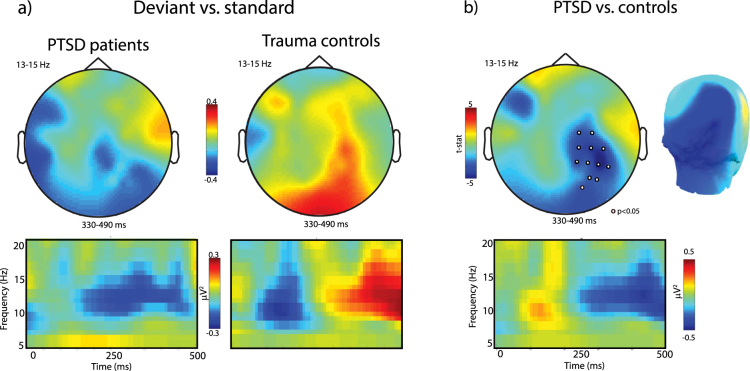Figure 2.
(a) Topographies (upper panel) and time-frequency representations (TFR, lower panel) of upper alpha band power after deviant as opposed to standard tones. (b) Greater alpha suppression at 330–490 ms after deviant (vs. standard) tones over posterior electrodes in PTSD patients compared to trauma-exposed matched controls suggests hyperresponsiveness to stimulus change, increased auditory processing, and/or stronger stimulus-feature representations in auditory sensory memory in PTSD. Note that topographies were averaged over time window and TFRs over electrodes where a cluster-based permutation test detected a significant group effect in response to auditory stimulus change.

